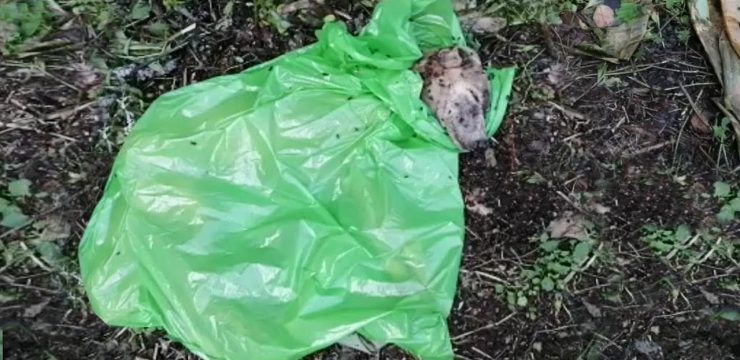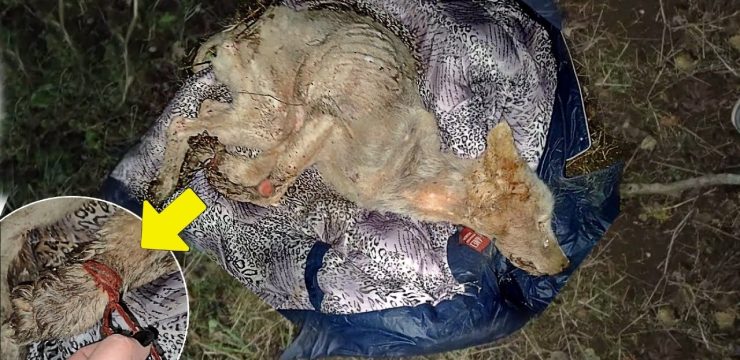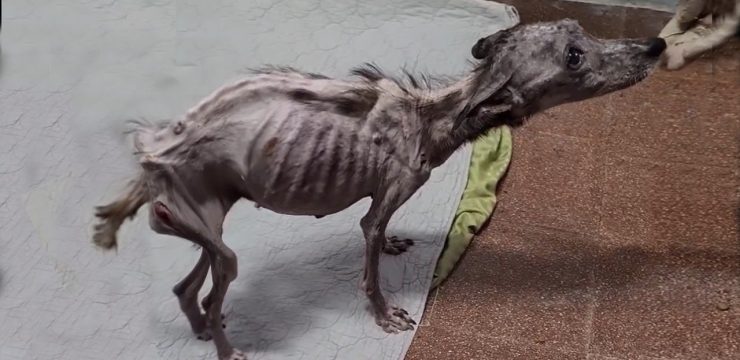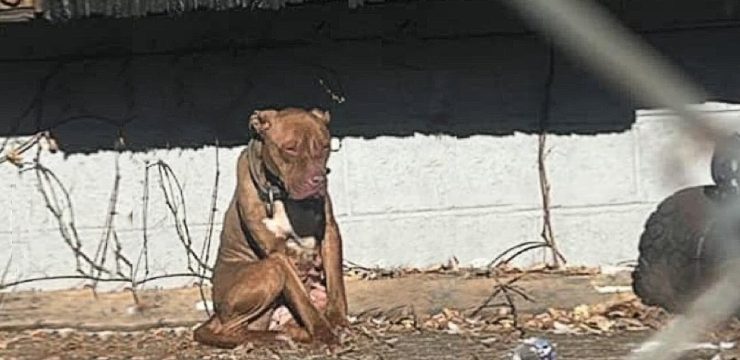The sun was already burning hot that morning, its rays stretching across the quiet shoreline of Equatorial Guinea and casting long, wavering shadows over the sand. The air was heavy with heat, and the stillness of the scene was broken only by the soft hiss of the tide. But then, lying motionless on the sand, there was something ancient—something immense. It was a leatherback sea turtle, her body stretching nearly six feet from head to tail, her massive, ridged shell covered in grit and tangled with stray bits of jungle debris. She should have been majestic in her size and presence, yet the sight before them was heartbreaking. She was utterly still.
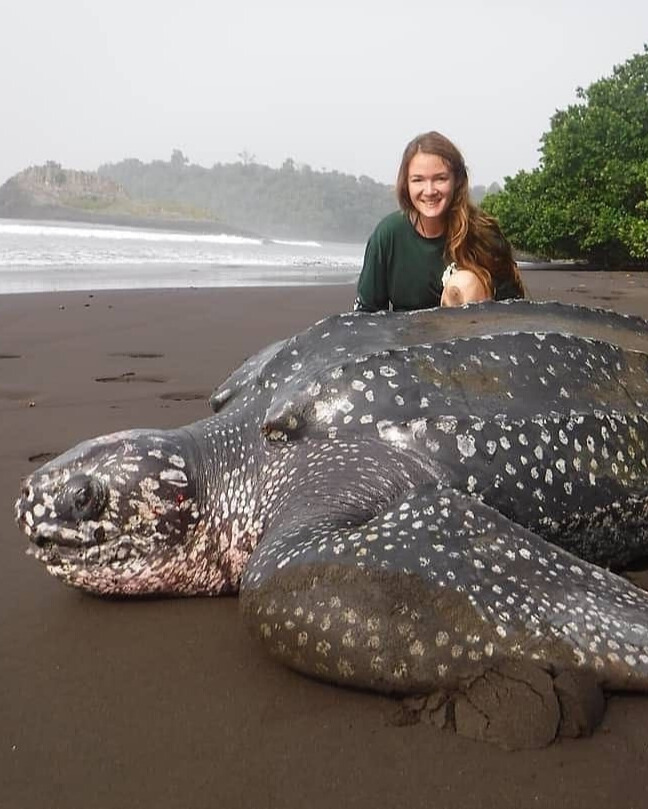
The team saw right away that she was in trouble. She had become trapped, wedged between the twisted base of a large tree and the dense, thorny brush of the jungle. Her powerful front flipper, slick with blood, lay twisted against the bark she had scraped raw in her desperate struggle to get free. Her dark, normally sleek skin was an alarming shade of flushed pink, scorched after hours beneath the relentless tropical sun. Her eyes were open but vacant, glassy, staring into nothing as if life was slowly slipping away.
Like her ancestors had done for millions of years, she had come ashore under the cover of darkness to nest. Leatherback sea turtles are among the most ancient mariners of the oceans, returning season after season to dig their nests in the sand, lay their eggs, and retreat to the sea before daylight. But something had gone wrong this time. Perhaps she had become disoriented. Perhaps startled by something. Instead of making her way back to the water, she had wandered too far inland, and now she was stuck—helpless against the punishing heat and her own injuries.
Alone, she would not have survived. The heat was too intense, her body too battered, her energy too far gone. But that morning, she was no longer alone.
A small team of conservationists, part of a local turtle monitoring effort, spotted her just in time. Without hesitation, they rushed to her aid. One of them sprinted to fetch water. Another knelt beside her, speaking softly—not knowing if the words were for her comfort or their own. They began pouring cool saltwater over her scorched skin, and steam rose instantly from her shell and body as the trapped heat released into the air.
Meanwhile, the rest of the group turned their attention to the obstacle. They leaned into the tree, shifted their weight, dug their bare hands into the sand to move roots and earth. Bit by bit, they carved out a path, each small victory bringing them closer to freeing her.
Through it all, she remained still, too weak to resist or even to respond. But then—when the tree finally shifted just enough and her trapped flipper was gently guided free—something inside her stirred.
First came the tiniest twitch. Then, a deep, shuddering breath. And then, with an effort that seemed to draw on the last reserves of her strength, she began to push. Slowly—agonizingly slowly—she dragged her massive body forward, each movement sending deep grooves into the sand. The conservationists stood silently, watching her summon the will to keep going.
It was a long, grueling crawl. But at last, the first lick of a wave reached her body. The instant the saltwater touched her skin, it was as if life flowed back into her. Her movements grew stronger, surer. The ocean seemed to call her home. And then, with one final surge, she pushed off the sand, disappearing beneath the foamy break of the waves.
She had made it. She lived.
This leatherback sea turtle—this living relic of a time long before humans—had been given a second chance. But her story is the rare one with a happy ending. Her species faces constant threats in nearly every part of their range. Many never escape from the fishing nets that entangle and drown them. Others mistake drifting plastic bags for jellyfish and choke to death. Poachers rob the next generation before the eggs can even hatch, scooping them from nests under the cover of darkness.
This one turtle survived because a handful of people happened to find her. She survived because someone cared enough to act—because someone decided that even one injured, heat-stricken animal was worth saving. She is alive today because, in that moment, strangers refused to walk away.
Her story carries a message that is bigger than the beach where it happened. Even the ancient can fall. Even the mighty can become trapped. Survival is not always guaranteed, and the difference between life and death can come down to the choices of a few who are willing to help.
For her, it was a small team on a blistering morning, pouring water and moving a tree. For others—whether human, animal, or an entire species—it may be something else entirely. But the principle remains: when we choose to act, we can change the outcome.
As she vanished into the deep blue, she returned to a world that has shaped her kind for over 100 million years. Somewhere out there, she may lay more eggs, sending the next generation into the sea. And perhaps some of them will return decades from now to the very same stretch of sand. Her survival is not just her own victory—it is a ripple in a much larger story.
Let her journey back to the water be a reminder that compassion is never wasted. That intervention matters. That sometimes, saving one life is enough to honor all life. And that in the battle between extinction and survival, the smallest acts—a bucket of water, a pair of helping hands, the will to push a tree—can tip the scales.
Because she lived, there is hope. And hope, once set free, can travel farther than even the strongest swimmer in the sea.

